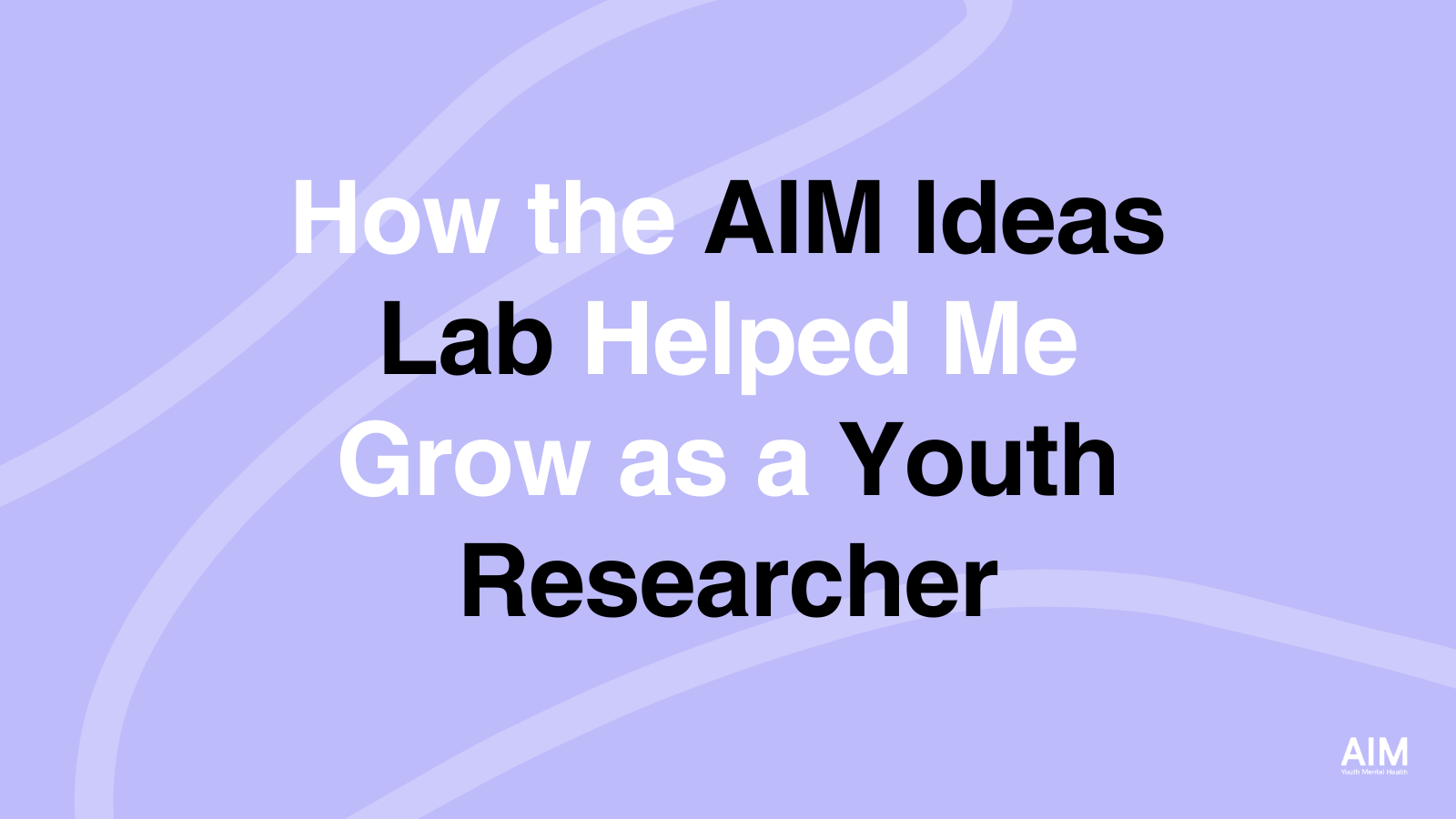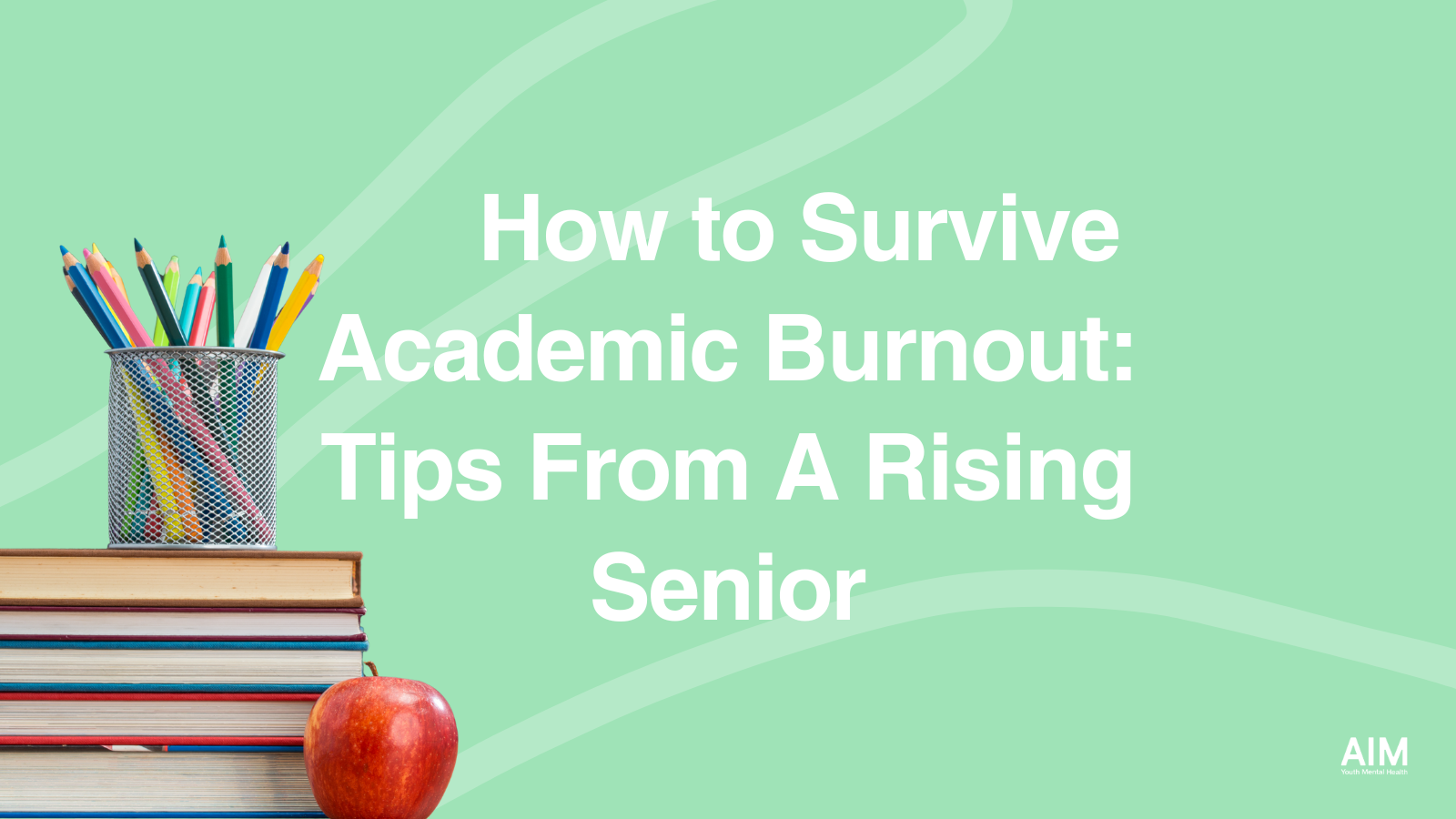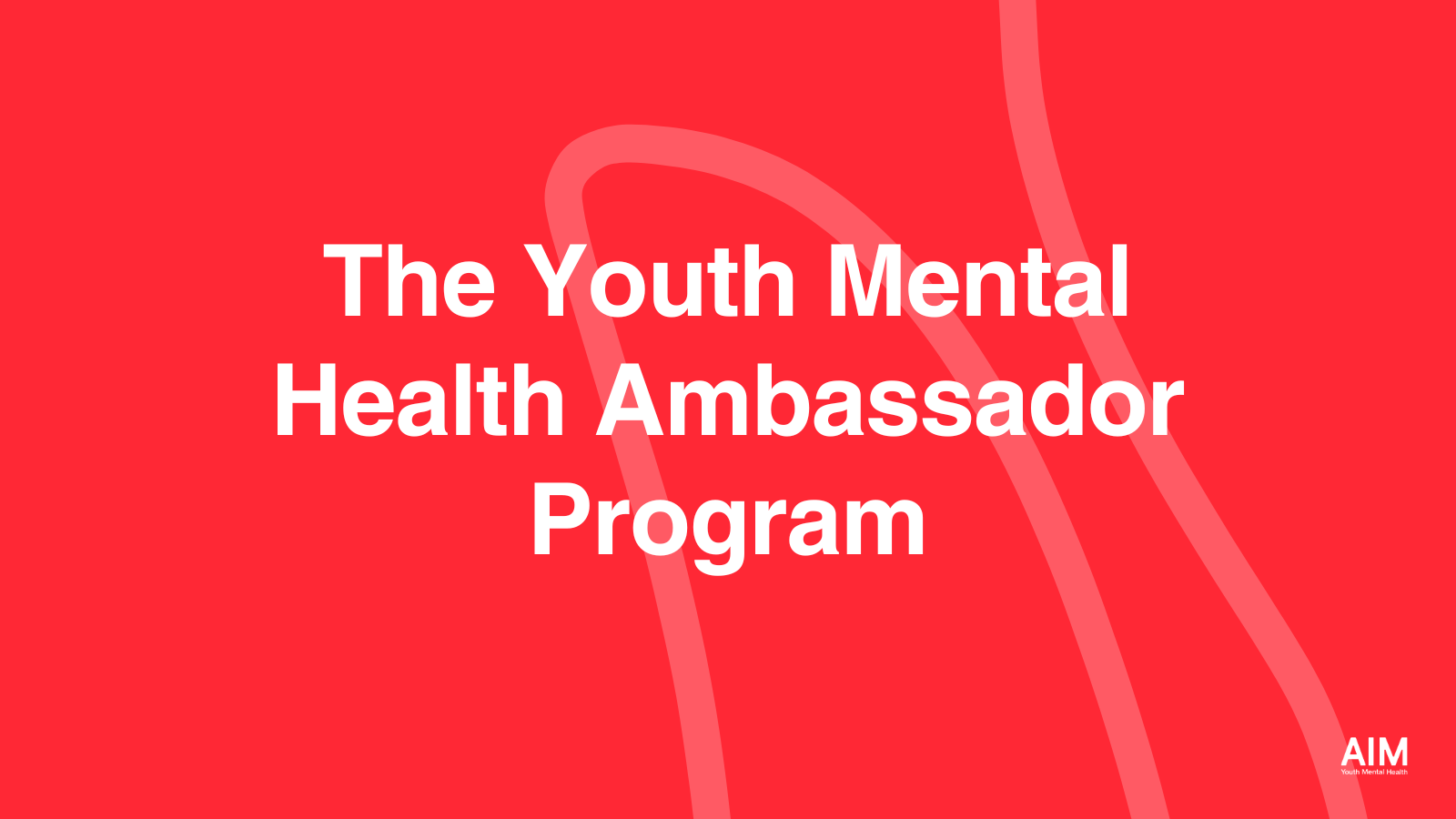How you live everyday is how you live your life. Read below for three ways (beyond meditation) to disrupt your routine to embrace a new year’s mindset of mindfulness.
By Meadowlark Monaghan
While New Years is the time we collectively agree to imbue the energy of turning a page to a fresh chapter, the truth is we have the power to push a reset button for ourselves at any given time. And sometimes, a reset button to the brain is exactly what we need.
Throughout my grappling with how I wanted to approach New Year’s resolutions this year, I found myself reflecting on some of the most poignant lessons I’ve learned during the previous one. Quite immediately, AIM’s Mind, Meditation, & Movement Event for World Mental Health Day came to mind.
I am honored to sit on AIM’s Youth Advisory Board and to have played a part in the organization of this event because it was, far and away, one of my most illuminating memories of 2022. While each panel expanded upon different facets of mental health support and healing for young adults, I found that each theme’s (plant medicine, meditation, and the mind-body connection, respectfully) bottom line kept returning to the fundamental importance of mindfulness and presence. The very subject that led to the most profound mindset shift for myself back in my teen years.
During high school, my mother gifted me a copy of Ram Dass’ book “Be Here Now”— my first account of presence and mindfulness that shook me to my core, resulting in a colossal shift to my mindset. Funnily enough, also beginning during my high school days and every subsequent January since, my mother calls me with one of her favorite jokes: “I’ve made some resolutions for you!” to which I obligingly chuckle as if I haven’t heard that one for ten years. While neither of us feel it’s quite effective for parents to go around making resolutions for their children (hence, the joke), encouraging and modeling a mindset of mindfulness may just be the best way for young people to head off into a new year.
Most folks during January fall into two camps: those ready to attack New Year’s resolutions with the gusto of a 23-year old who just discovered Andrew Huberman’s podcast, and those who will not be told what to do or when to change by a culturally perpetuated narrative. In either case, both decisions (yes, doing nothing is also a choice), come back to our mindsets.
Here’s a statement that stings and empowers simultaneously: our mindset is always within our control. “It’s not what happens to you; it’s how you perceive what is happening.” Kim Egel, a San Diego based marriage and family therapist, highlights the importance of bringing a healthy perspective into 2023 by choosing to focus on what we can control. “Resistance toward what is happening will always make things harder than they actually are. This is not to discount your pain. Rather, it’s to highlight what you can control, which is your perspective.” Essentially, you can either repeat what you have been doing or you can evolve it.
While many of us view our mindset as deeply ingrained conditioning that keeps us stuck in a pattern or a perspective, the truth is we can view our mindset in two ways. The former, or, as if we are on the verge of reinventing and rewriting our self narratives at any given moment.
When we think about making a shift to our perspective, typically we move first to analyzing our thoughts. As the classic model of Cognitive Behavioral Therapy tells us, it is a lot easier to control our thoughts and our behaviors as a means of healing, as opposed to, say, our emotions or physical conditions. Basically, it’s more manageable to train your thoughts than it is to command yourself to stop feeling stress. Therefore, in the case of adopting a new mindset for the new year, focusing on our thoughts may be exactly the first step we need.
In 2010, Harvard researchers discovered that the average person spends 47% of their day on ‘autopilot’ engaging in behaviors with a lack of mindfulness as their thoughts drift beyond the tasks at hand. Interestingly enough, the participants also reported higher levels of unhappiness during these autopilot moments.
Now I have to admit, my go to answer for almost everything these days is a daily meditation or mindfulness practice. Meditation has some of the most research-backed support for a vast myriad of mental health challenges, stressors, and daily life hurdles. A meditation practice keeps us grounded in the chaos, creates space between our reactions and responses, develops a sense of self confidence and self worth, improves our levels of anxiety, depression, stress, and so much more.
It also, most notably, is exactly the daily commitment that trains our brain to stay in the present, off autopilot and into consciousness, giving us much more access to control over our thoughts and attention. (Side Note: I recently have been using the Open app which has guided meditations, breathwork, and workouts, for my mindfulness fix. It’s been a great addition to my daily practice, particularly the breathwork. Did you know a recent Stanford study found that in a head-to-head comparison, brief (5min/day) breath-work out performed meditation for improving mood, autonomic regulation, and lowering stress around the clock?!)
In our attempts to adopt a new mindset, mindfulness disrupts our autopilot mode and gives us the space to consciously choose to shift our perspective. On that note, here are three ways (beyond meditation) to disrupt your routine to embrace a new year’s mindset of mindfulness:
Be a deliberate thinker: When our minds are out of the present, we are typically more unhappy. Staying present with our thoughts allows us to be deliberate about what we are thinking and how our thoughts are serving us. This intention allows us to build a new mindset, one thought at a time. While practicing to slowly untangle our negative and limiting beliefs may feel daunting, there are two key pieces to keep in mind that contribute to our efforts significantly. First, remind yourself that “you can do hard things”. Beyond being a catchy mantra for Glennon Doyle, reminding ourselves that we are choosing to engage in this challenging practice (looking at you, meditation) to better ourselves sets off an intrinsic reward system that actually produces more dopamine while we are actively in the practice. Therefore, rewarding us along the way of the journey, not simply when we reach our destination or goal as “a meditator”. Plus, as we learned recently, rewards along the way helps us achieve our goals. And second, we can also utilize our brain’s ability to evolve and grow with more fun coping strategies that are equally supportive. Which leads us too…
Utilize neuroplasticity: Neuroplasticity is our brain’s ability to change through growth and reorganization. Simply taking a new route home from work does this. Listening to music can do this. Even getting yourself into a flow state by mindful coloring can promote neuroplasticity. Engaging in small disruptors to our ubiquitous, daily routines quite literally rewires our brain for growth. These small disruptors act as a bridge from telling our brains that we actually enjoy trying new things (aka forming new neural pathways) from trying a new culinary cuisine all the way up to rewiring our thoughts to support an entirely new mindset. A 2020 Literature Review of neuroplasticity in children and adolescents found that neuroplasticity seems to support increased cortical thickness and served to mitigate gray matter volume decreases (which is seen in neurodevelopmental disorders such as ADHD). Neuroplasticity and environmental interventions together were associated with increased attention, planning, memory, math and reading performance, and even symptom severity for children with OCD and anxiety. (Weyandt, Clarkin, & Thompson, 2020).
Be willing to be a fool: A recent clip of Trevor Noah was circulating social media in which he shares how his hack for learning new languages is through imitation. He goes on to explain that unbridled willingness to imitate without insecurity is why it’s much easier for children to learn new languages than adults. Kids are simply more willing to try something new and be a fool while doing it. If we abandon our self preservation to try new things, even at the risk of looking foolish, we expand our horizons, (again) building neuroplasticity, to bring a little more joy into our lives. Actively challenging our limiting beliefs or subconscious feelings through willingness to be silly can lead to an entirely new mindset of how we view ourselves.
How you live everyday is how you live your life. Embracing small disruptors to the monotony of our daily routines brings us more deeply and enjoyably into the present moment, to actually be witness to this wild ride we call life.
______________________
About the Author
Meadowlark Monaghan (she/hers) is a consultant using her knowledge gained as a mental health professional to act as a liaison between brands, creators, + online communities with the field of psychology and mental health. She also co-hosts the personal development podcast, Thoughts May Vary. Her work has been seen with Madhappy, Local Optimist, The Mayfair Group, Lonely Ghost, AIM Youth Mental Health, NAMI San Diego and more.





